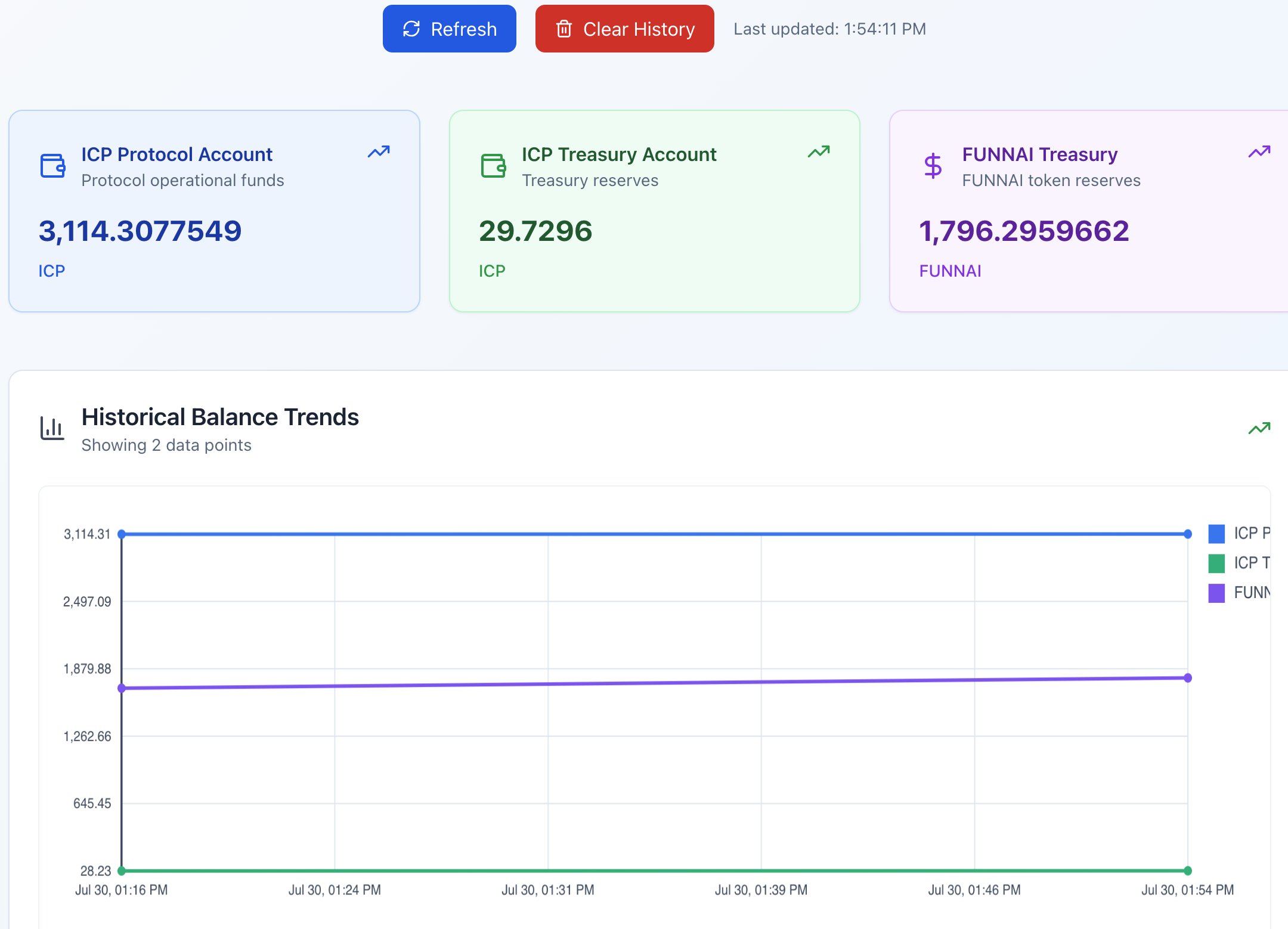The team behind funnAI has started converting over 3,000 ICP from its treasury into $FUNNAI, marking a fresh phase in how the protocol manages its tokenomics. This process, which runs fully on-chain and without manual input, is tied to the project’s idea of creating a decentralised, user-driven AI economy.
At the centre of this is the funnAI Treasury canister, which automates the buyback process over time. Rather than making a single large purchase, the treasury is programmed to gradually convert its ICP balance into FUNNAI tokens. According to the project, each buy contributes to supporting liquidity and the overall economic structure of the protocol.
This isn’t about launching a new product or rolling out a new interface. The focus is on what the project calls Proof-of-AI-Work — a model that prioritises decentralised execution, user-powered inputs, and ongoing economic support for those building AI tools within the ecosystem.
One of the more visible aspects of the rollout is a live dashboard being developed by community member @Akustyl in collaboration with Caffeine AI. The dashboard, named Funnalyzer, allows users to track the buybacks in real-time. It gives transparency to a process that might otherwise go unnoticed, and it opens the door for others to build around the same data set.
The gradual nature of the ICP conversion gives the project flexibility while avoiding short-term market shocks. Instead of pushing volume in a single direction, the approach favours slow reinforcement — aligning token flow with activity, without taking full control out of the hands of the community.
While funnAI has kept its messaging low-key, the mechanics here are deliberately open. The smart contracts that power the treasury are public, and the Funnalyzer dashboard offers a clear look at what’s happening behind the scenes. It’s part of a broader move across parts of the Internet Computer ecosystem to prioritise on-chain execution and reduce reliance on off-chain systems or centralised controls.
As the treasury continues its conversion process, the next question may be how other parts of the protocol adapt. Whether the model catches on more widely will likely depend on what users and developers build around it — and how sustainable it proves over time.
You can follow the buybacks and tokenomics data as it unfolds through the live dashboard at funnalyzer-f97.caffeine.xyz.
Dear Reader,
Ledger Life is an independent platform dedicated to covering the Internet Computer (ICP) ecosystem and beyond. We focus on real stories, builder updates, project launches, and the quiet innovations that often get missed.
We’re not backed by sponsors. We rely on readers like you.
If you find value in what we publish—whether it’s deep dives into dApps, explainers on decentralised tech, or just keeping track of what’s moving in Web3—please consider making a donation. It helps us cover costs, stay consistent, and remain truly independent.
Your support goes a long way.
🧠 ICP Principal: ins6i-d53ug-zxmgh-qvum3-r3pvl-ufcvu-bdyon-ovzdy-d26k3-lgq2v-3qe
🧾 ICP Address: f8deb966878f8b83204b251d5d799e0345ea72b8e62e8cf9da8d8830e1b3b05f
🪙 BTC Wallet: bc1pp5kuez9r2atdmrp4jmu6fxersny4uhnaxyrxau4dg7365je8sy2q9zff6p
Every contribution helps keep the lights on, the stories flowing, and the crypto clutter out.
Thank you for reading, sharing, and being part of this experiment in decentralised media.
—Team Ledger Life



